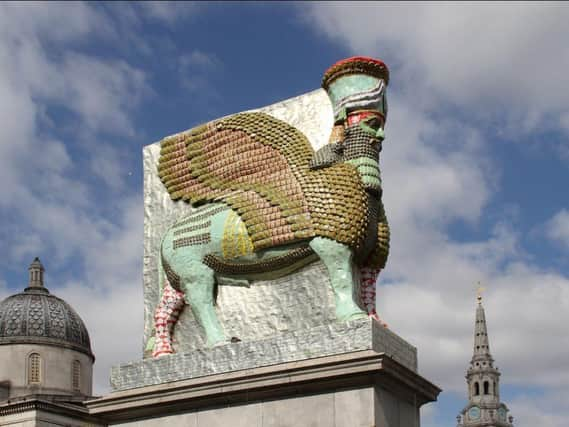Ambitious programme Eastbourne ALIVE marks town's Turner Prize year


The project, funded by Arts Council England, encompasses a wide-ranging programme, including the reanimation of underused spaces through public art, dance and music events as well as school visits to Towner Eastbourne. The full Eastbourne ALIVE programme will be running throughout the Turner Prize 2023 exhibition period, from September 2023 to April 2024, launching on September 28 2023, the same day as the Turner Prize.
To accompany the Turner Prize exhibition, a series of major public artworks and interventions will be installed across Eastbourne by artists: Nadina Ali, Flo Brooks, Helen Cammock, Nathan Coley, Martyn Cross, Eve De Haan, Tarek Lakhrissi, Adam Moore, Madeleine Pledge, Michael Rakowitz, Rottingdean Bazaar and Liz Wilson.
Advertisement
Hide AdAdvertisement
Hide AdSpokeswoman Nicola Jeffs said: “The artworks will all be set in public locations across the town to include the seafront, outside Towner Eastbourne, on Eastbourne Pier and in community spaces and cafes – and explore the notion of a modern-day monument. Drawing on the resort’s original design from the mid-19th century – laid out in long tree-lined boulevards marked by grand monuments and statues – these temporary public art installations will investigate what cultural markers might look like today and what events, objects or people they would memorialise.”
Joe Hill, director of Towner Eastbourne, said: “We are delighted to share the news of what's planned for Eastbourne ALIVE, bringing even more art to our town this autumn. The town will be animated by some fantastic art works and a range of engaging events that will truly animate the town during Turner Prize 2023. We are also excited to welcome all our Year 9 students in Eastbourne to experience the Turner Prize and to support art teachers to bring young people to see one of the most globally significant art exhibitions in the cultural calendar.”
Sarah Dance, project director of Eastbourne ALIVE, added: “It’s been a pleasure to work with such a fantastic group of cultural partners from across Eastbourne to bring this exciting selection of artists and their work to the town. Eastbourne ALIVE is a celebration of the Turner Prize being hosted in Eastbourne and represents a huge opportunity for Eastbourne. Through a wide range of projects and interventions we hope to create a lasting legacy for the town, with the arts and culture embedded in its vision for the future.”
Stephen Holt, CEO of Your Eastbourne BID, said: “It is wonderful to be closely working with Eastbourne ALIVE during Turner Prize 2023. It is really important that the town centre is connected to this fabulous event and that those visiting Towner Eastbourne this year know that there’s a range of unique art and an unrivaled cultural offering in our town.”
The works across the town include:
Advertisement
Hide AdAdvertisement
Hide AdMichael Rakowitz’s winged bull, titled The invisible enemy should not exist (Lamassu of Nineveh), will be placed in Eastbourne after it stood guard on Trafalgar Square’s Fourth Plinth where it was originally commissioned by the courtesy of the Mayor of London. The original Lamassu stood at the entrance to Nergal Gate of Nineveh from c700BC until February 2015 when ISIS destroyed it along with artifacts in the nearby Mosul Museum. Michael Rakowitz reconstructed the Lamassu for the Fourth Plinth in Trafalgar Square, London, using empty metal Iraqi date syrup cans to clad an underlying steel armature. The salvage of date syrup cans makes present the human, economic and ecological disasters caused by the Iraqi Wars and their aftermath. Iraqi dates were once considered the best in the world and constituted the country’s second largest export after oil. In the late 1970s, the Iraqi date industry listed over 30 million date palms in the country. By the end of the 2003 Iraq War, only three million remained.